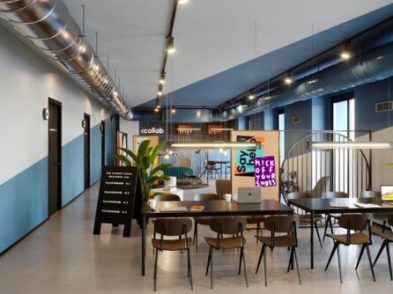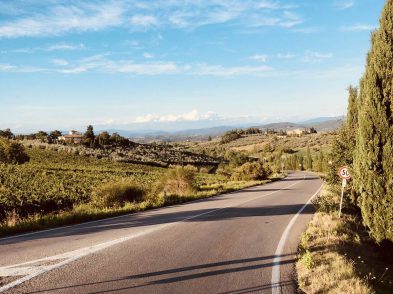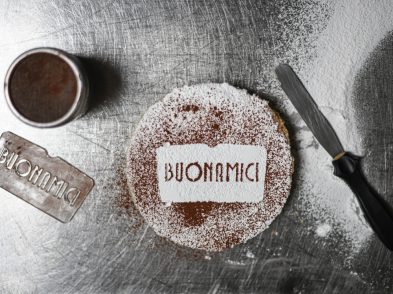The vintage photo booths dotted around Florence are a thing of wonder, producing black-and-white film photos with a decades-old analogue camera. But have you ever stopped to think about what goes on inside the machine during the four and a half minutes it takes to develop your photos? Phoebe Hunt talks to Matteo Sani about what’s so magical about these forgotten old machines and why he decided to rescue them.
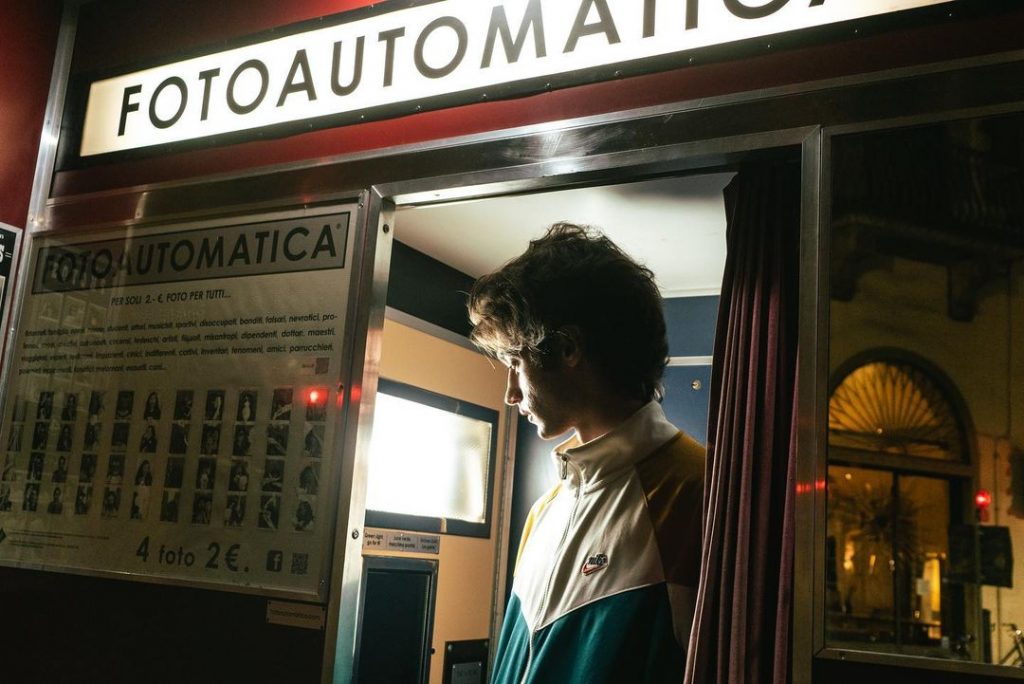
On certain street corners in Florence, you may or may not have noticed FOTOAUTOMATICA machines, photo booths that look like they come from another time and place. Well, that’s because they do. These machines are in fact original photo cabins, the kind you’d use for passport photos in a pre-digital era, and some of them date back to the early 1950s. In 2011, Matteo Sani set out on a mission to lovingly restore these old machines and bring them to the streets of Florence. He quit his job as a film set designer and took a year-long sabbatical, deciding to travel around Eastern Europe buying up disused analogue photo booths. Sani’s plan was somewhere between a passion project and a stroke of madness, and at the beginning making a living from it was the last thing on his mind.
“It was quite a risk,” he admitted. “I had no idea whether I’d actually be able to make these machines work once I’d found them and shipped them back to Italy, or what I was going to do with them if I could.” Over the course of a year, he travelled from Tallinn to Tirana on a long and fascinating adventure to find and discover all these old machines to bring home. In reality, he found them all through word of mouth, in various states of disrepair and dating from the early 1950s to the 1980s. “A lot of them turned up in the ex-Soviet Union, areas which during the Cold War years hadn’t modernised as quickly and therefore had taken longer to replace their old analogue photo booths with new digital ones.”
When Sani got these machines home (he had gathered five or six of them over the course of the year) and opened them up, he discovered the internal mechanisms were all in foreign languages he couldn’t understand. Nevertheless, the techniques are a universal language and slowly he managed to work out the functions. For him, this phase of dissecting and restoring the machines to exactly how they would once have been was a labour of love. He worked out what parts they needed and which chemicals he needed to get them running. Of course, many of these liquids were no longer commonly available, with analogue film all but disappeared in the early 2010s.
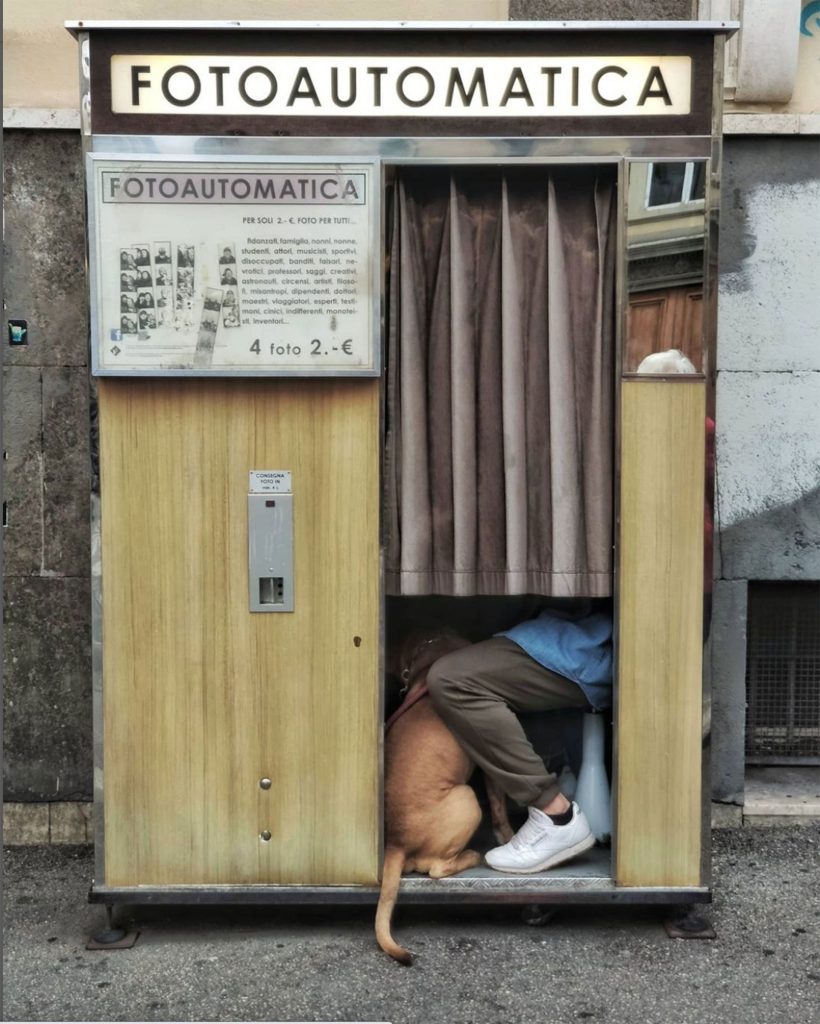
So, I ask, what actually happens in those four and a half minutes between the photo being taken and dropping out into the dispenser with a gush of hot air? To my delight, Sari then offers to unlock the machine on via dei Serragli and show me how it works. Inside the photo booth there is a mini dark-room and development studio within the machine, just as I hoped there would be, with a small, primitive robotic hand, which picks up the white strips of paper and dunks them into the development liquids one by one. The liquids are in a sort of slowly spinning carousel, each segment filled with a different processing liquid, toners, rinsing waters and fixers. There is no negative, so the photo you get is the original. If it doesn’t print, it’s lost forever.
On all the machines, Sani fixed his iconic and trademarked FOTOAUTOMATICA sign, but everything else he kept true to the original. “To me, these are more museum pieces than anything commercial and I was fastidious about staying true to every single part of their original function. They’re works of art, outdoor works of art, you could say, a tribute to this era in time.” The only electric part is the flash.
After seeing how it works, the four and a half minute wait suddenly seems remarkably quick. “It may seem a long time to wait today,” Sari agrees, “but back in the Fifties these would have been the height of speed and efficiency. The process is purely physical, so in fact for its day it’s quite incredible science.”
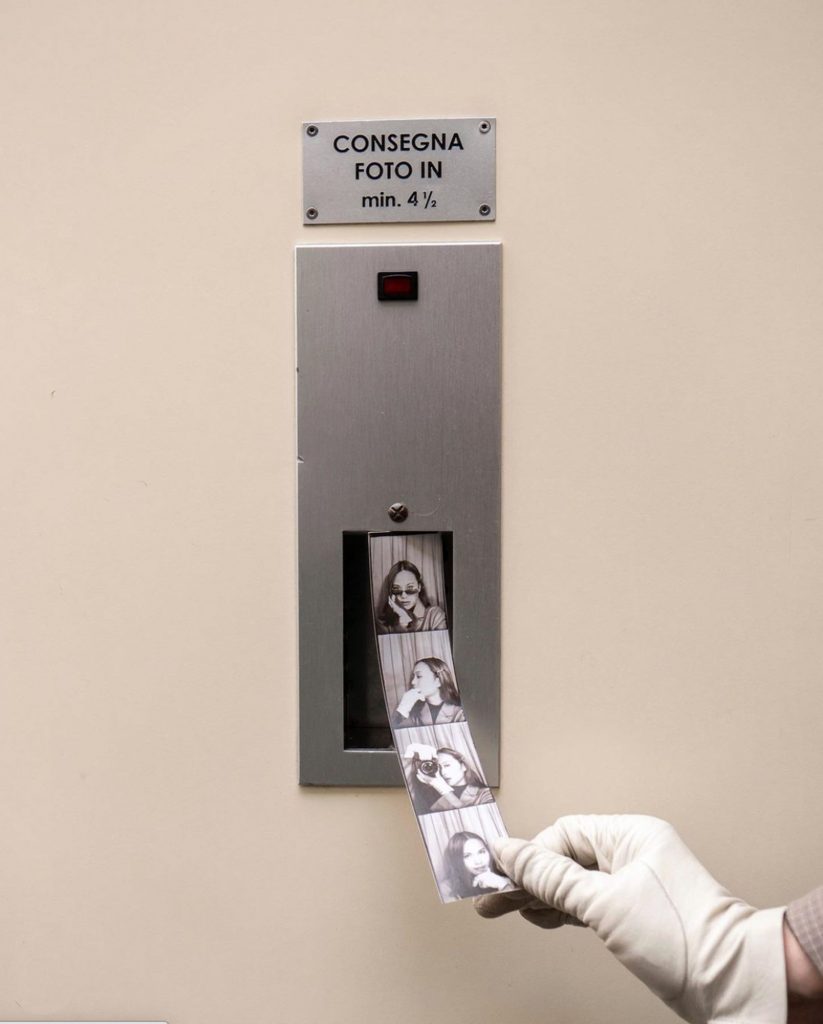
So when we have access to modern phone cameras in an instant, why is it that we’re willing to pay, stand and wait for an image that we can’t edit or filter? “These Fotoautomatica photograph the truth,” Sari says, simply. “The thing that’s priceless is that they capture a true and unfiltered moment in time. You can’t decide how you’re presented or what moment it captures. You don’t know when exactly it’s going to take the picture. The machine decides. You put your coins in and you permit it to tell your story. It goes as it goes, it’s a surprise.” Also, he admits, “We’re all more beautiful in black and white. You can’t see the wrinkles!”
For Sani, these have always been more of an art installation than any kind of commercial project. His interest in film-era photo booths was first piqued on a trip to France years before, when he saw one placed just inside a museum. It wasn’t immediately obvious whether it was part of the exhibition or just there for people’s enjoyment, but the idea stuck with him. A few years later, he read about a photo booth installation at Venice Biennale by an artist called Franco Vacarri in the 1970s, which gave him the idea to bring these to Florence.
“It’s a type of psychology. Everyone has an ego; everyone has a side they want to present. I like to leave to the imagination once people are behind that curtain alone in the photo cabin,” Sari says. Occasionally though, he does get a glimpse into other people’s untitled photo booth stories, in the rare pictures that get swallowed up by the machine or stuck in the dispenser. Over the years, Matteo has built up quite a collection of these nameless faces. “I keep them all,” he says. “Of course, they’re people’s private property, I never do anything with them, but I occasionally look at them and wonder who these people are and what their story is. It’s priceless.”
And what about Sani’s plans for the future of Fotoautomatica? Is there a way he can spread the legacy of this art further? “A museum of photobooths doesn’t exist in Italy or in Europe, as far as I know. I would love to make one, with other colleagues from around the world who share this passion for photo booths. I’d like a small museum or just an area with three or four models of photo booths, from different eras, showing people the inner workings. Not anything too serious or pretentious, but I want to show people how they work and what’s going on with the mechanics inside, and maybe inspire more specialists who are passionate about photography. Of course I need to work with the public administration to see how this could be possible, but once Covid is over it’s something I’d like to start working on.”
DID YOU KNOW?
- If you lose your money or photos, FOTOAUTOMATICA gives you your money back or sends them to you if they get stuck in the machine.
- You can use these photos for your carta d’identita, university or library card, and so on: any documents apart from your passport or driving licence.
WHERE TO FIND THEM
Via dell’Agnolo | Via del Proconsolo | Piazza Stazione | Largo Fratelli Alinari | Via Santa Monaca | The Student Hotel


